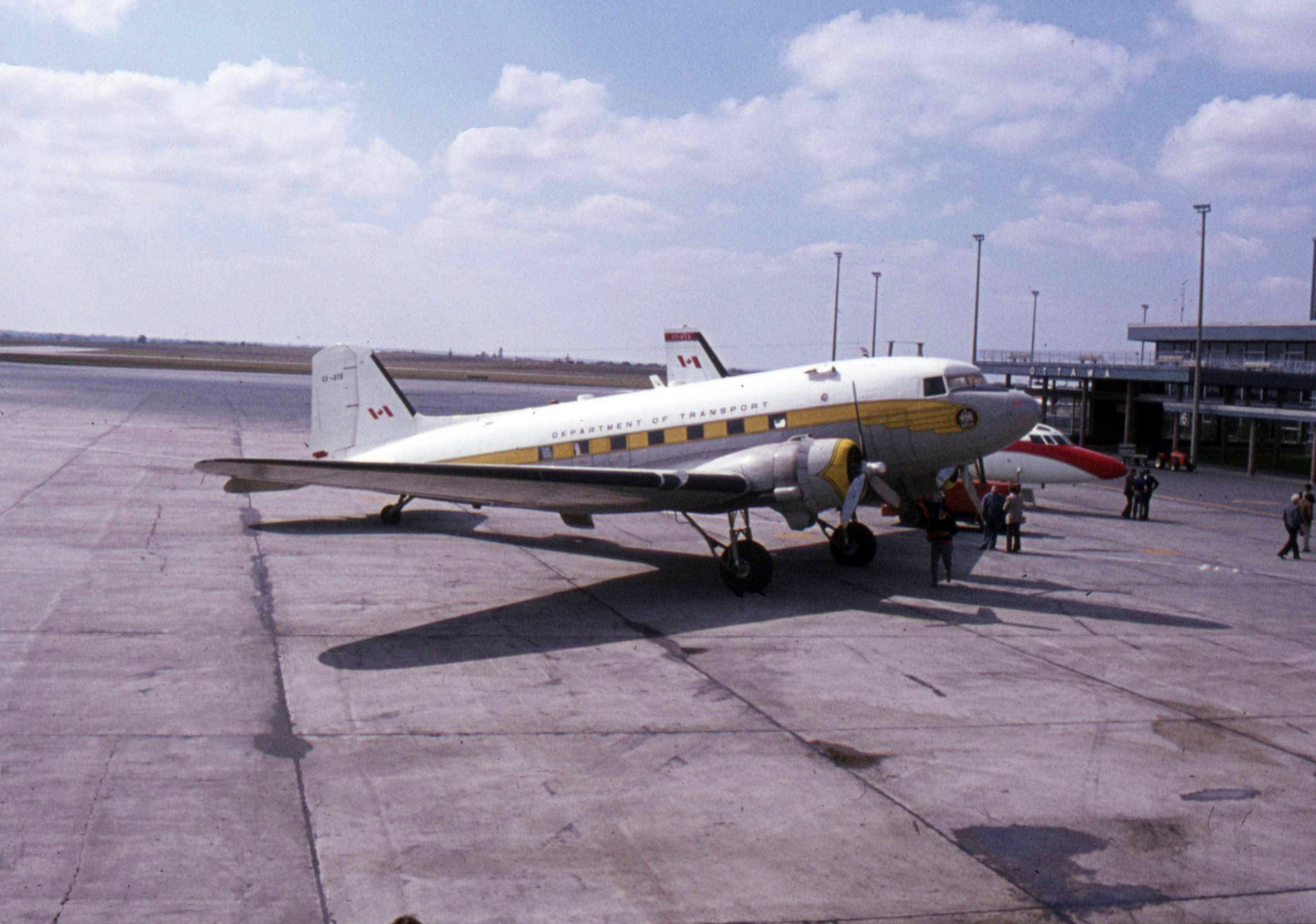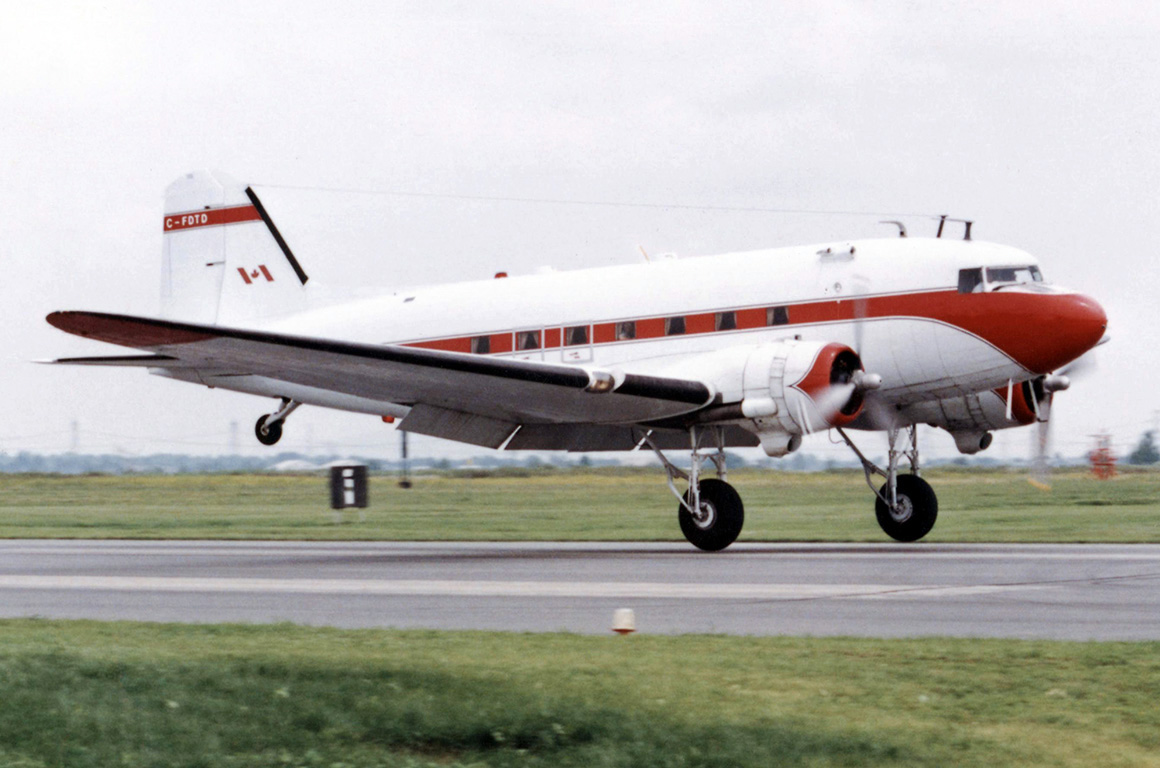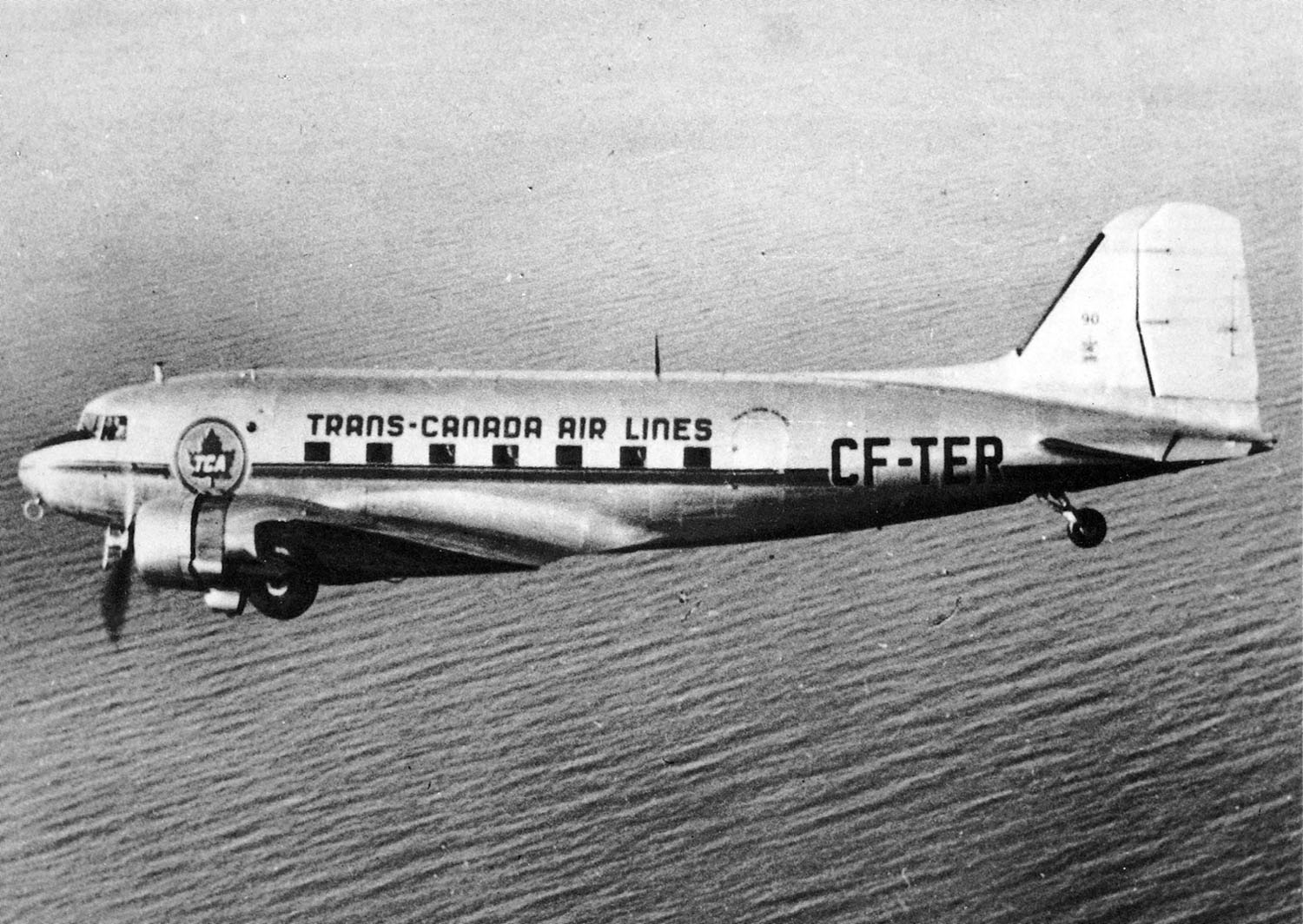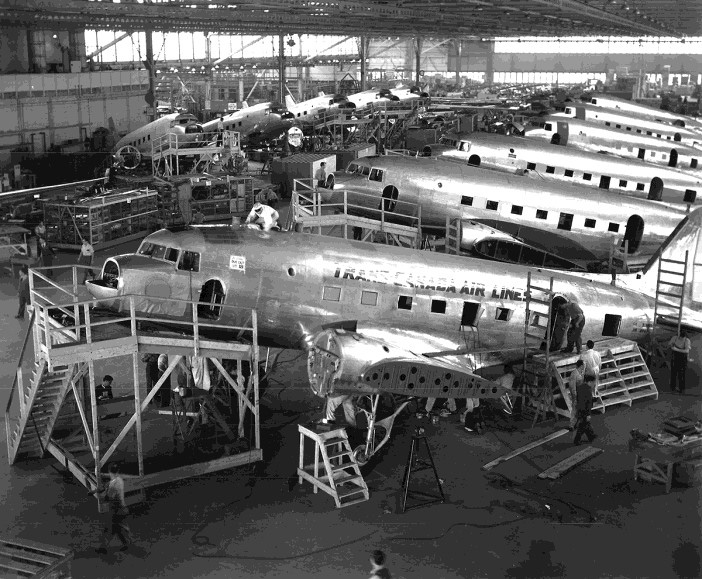Acquired by the Canadian Department of Transport during the 1960s, CF-TER becomes CF-DTD. Several modifications were incorporated:
- The passenger door was replaced by passenger stairs.
- An avionic rack is added in the bulkhead section.
 CF-DTD in Ottawa, 1974
CF-DTD in Ottawa, 1974

C-FDTD during her Canadian tour, Transport Canada 50th anniversary.
C-FDTD was withdrawn from service at the end of the 80's.
The DC-3 was a major milestone for Trans-Canada Airlines (TCA). It was used extensively on all domestic routes except over the Rocky Mountains. It flew as a companion to the faster Lockheed 14 and 18s and eventually with the Viscount which soon replaced it.
TCA operated a total of 30 DC-3s. Twenty seven were former C-47s and three were former USAF C-49s, all converted to airline configuration by Canadair. The first aircraft, CF-TDJ, entered service on November 1st 1945, flying between Toronto and New York. The final aircraft, CF-TEA departed on April 13th 1963.

Our aircraft, during her career with TransCanada Airlines (TCA)
The Pratt & Whitney powered aircraft were designated DC-3P by TCA and the Wright powered DC-3W. The basic DC-3P had three variants as follow:
- DC-3PT: Originally a training aircraft used also for Cargo
- DC-3PV : 28 passengers aircraft used on the Pacific Coast only
- DC-3PC: Equipped to handle cargo in the front, three rows of seats in the passenger cabin
- DC-3W : 28 passengers aircraft used on the Pacific coast only
Registrations were as follow:
| TCA Type | Model | Registration | T.C.A number |
| DC-3W | C-49 | CF-TDJ | 357 |
| DC-3W | C-49 | CF-TDK | 358 |
| DC-3W | C-49 | CF-TDL | 359 |
| DC-3P | C-47 | CF-TDM | 360 |
| DC-3P | C-47 | CF-TDN | 361 |
| DC-3PC | C-47 | CF-TDO | 362 |
| DC-3P | C-47 | CF-TDP | 363 |
| DC-3P | C-47 | CF-TDQ | 364 |
| DC-3PV | C-47 | CF-TDR | 365 |
| DC-3P | C-47 | CF-TDS | 366 |
| DC-3P | C-47 | CF-TDT | 367 |
| DC-3P | C-47 | CF-TDU | 368 |
| DC-3PV | C-47 | CF-TDV | 369 |
| DC-3P | C-47 | CF-TDW | 370 |
| DC-3P | C-47 | CF-TDX | 371 |
| DC-3P | C-47 | CF-TDY | 372 |
| DC-3PV | C-47 | CF-TDZ | 373 |
| DC-3P | C-47 | CF-TEA | 374 |
| DC-3PC | C-47 | CF-TEB | 375 |
| DC-3P | C-47 | CF-TEC | 376 |
| DC-3P | C-47 | CF-TED | 377 |
| DC-3P | C-47 | CF-TEE | 378 |
| DC-3PC | C-47 | CF-TEF | 379 |
| DC-3P | C-47 | CF-TEG | 380 |
| DC-3P | C-47 | CF-TEH | 381 |
| DC-3P | C-47 | CF-TEI | 382 |
| DC-3P | C-47 | CF-TEJ | 383 |
| DC-3P | C-47 | CF-TER | 390 |
| DC-3P | C-47 | CF-TES | 391 |
| DC-3PT | C-47 | CF-TET | 392 |
Our aircraft, CF-TER started her career with TCA on April 4th 1947 and was withdrawn from service around summer 1957.
When the U.S. government ordered Douglas Aircraft to cease production of the C-47 within 24 hours of the end of the Second World War, Benjamin W. Franklin, president of Canadair, decided to send Ralph G. Stopps, the company’s factory manager, to Oklahoma City. He alerted Franklin to the opportunity he foresaw: post-war, many airlines were looking for new aircraft and Stopps quickly secured more than 600 cars of parts and tools for the C-47. At the same time, many C-47s were purchased as surplus from the Royal Air Force and USAAF and ferried by Don McVicar's World-Wide Airways from England. Our aircraft was among them.

In his book "Mosquito racer", Donc McVicar wrote on this topic: "Bob White told me what Canadair planned to do with their Douglas rebuild programme. He said that Franklin and his right-hand manRalph Stoppps who had been with Vickers when they were were building Vedettes in pre-wars days, which was long before Canadair bought the company, had learned that there would be immense amounts of both DC-3 and DC-4 parts available as "surplus"as the war wound down. Apprently the venerable Donald Douglas Senior had decided these aircraft were obsolete and would probably not be flying in a few years, so he would concentrate on newer pressurized transports like the DC6 or more interesting developments. The Canadair brass didn't agree and scoured the USA picking up Douglas parts at an incredible 'junkman's price' of ten cents per pound weight. The even more valuable jigs and tools were acquired at two cents per pound. More than 600 cardloads of material from Oklahoma city, Parkirdge, Illinois and other Douglas Factory sites were eventually delivered to Canadair.[...] We wondered if there might not be some red faces in Washiungton later especially when they discovered that all the C47/DC3 drawings had gone the way of parts".
As of January 1st, 1946, the former Noorduyn plant in Cartierville, Montréal was renamed the Canadair Conversion Plant. The aircraft were cleaned, the avionics changed, passenger seats installed and the cargo loading door replaced by a dedicated passenger entrance.

